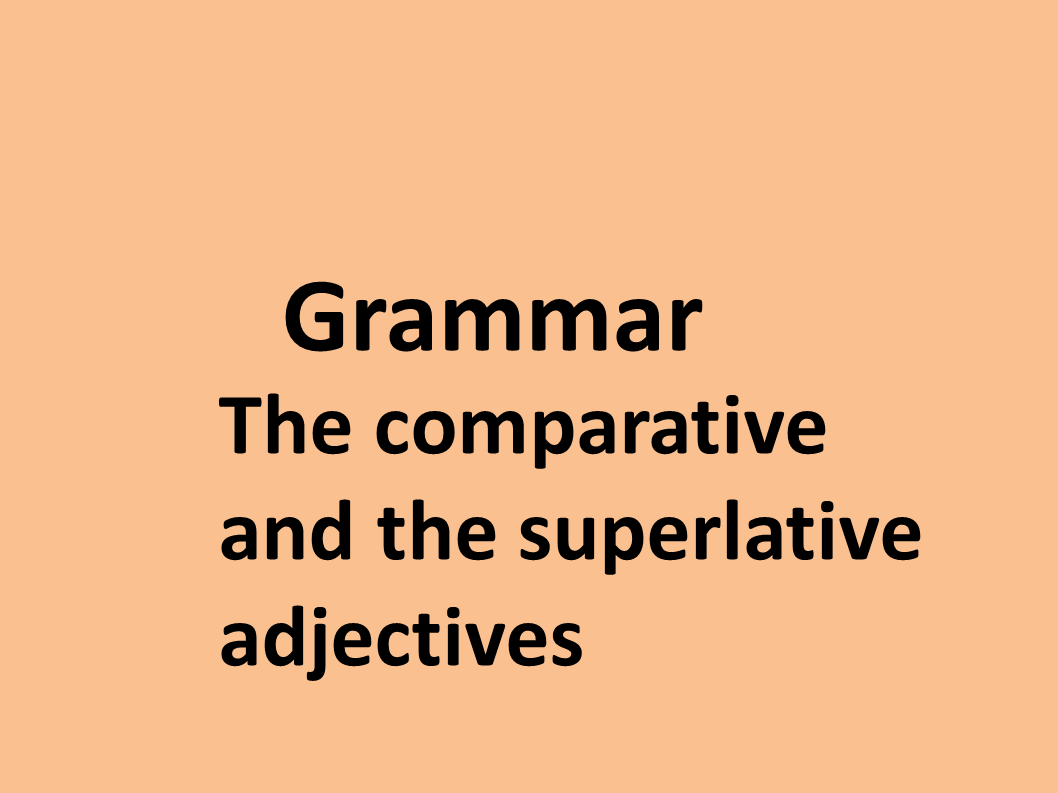Comparative adjectives
Comparative adjectives are used to compare differences between two objects (smaller, higher larger). This is how it is formed:
Noun (subject) + verb + comparative adjective + than + noun (object).
The second item of comparison can be omitted if it is clear from the context.
Examples
- Peter is taller than Roy.
- My hat is bigger than hers.
- These earrings are smaller than those that I lost.
- Your dog runs faster than you.

Superlative adjectives
Superlative adjectives are used in sentences where a subject is compared to a group of objects. This is how it is formed:
Noun (subject) + verb + the + superlative adjective + noun (object).
Examples
- Which city is the largest?
- This is the smallest animal I’ve ever seen.
- Your horse ran the fastest and won the race.
Forming regular comparatives and superlatives
One syllable adjectives
Add -er for the comparative and -est for the superlative. If the adjective has a consonant + single vowel + consonant spelling, the final consonant must be doubled before adding the ending.

Two syllables
Adjectives with two syllables can form the comparative either by adding -er or by using the word more. These adjectives form the superlative either by adding -est or by using most. Both forms can usually be used, so if you are not sure it is safer to use the more and most form. For adjectives ending in y, change the y to an i before adding the ending.

Three or more syllables
Adjectives with three or more syllables form the comparative by putting more in front of the adjective, and the superlative by putting most in front.

Irregular comparatives and superlatives
These adjectives have completely irregular comparative and superlative forms.

Examples
- This exam was the worst.
- You drive better than I do.
- This hat is less expensive than that one.

